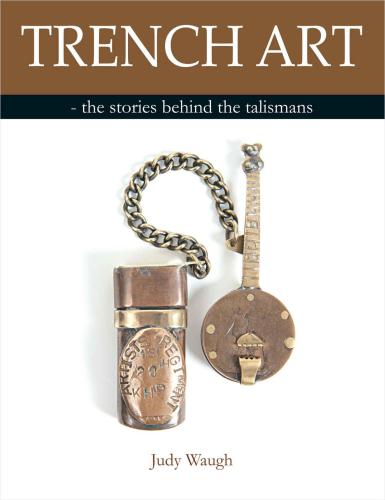

Most ebook files are in PDF format, so you can easily read them using various software such as Foxit Reader or directly on the Google Chrome browser.
Some ebook files are released by publishers in other formats such as .awz, .mobi, .epub, .fb2, etc. You may need to install specific software to read these formats on mobile/PC, such as Calibre.
Please read the tutorial at this link: https://ebookbell.com/faq
We offer FREE conversion to the popular formats you request; however, this may take some time. Therefore, right after payment, please email us, and we will try to provide the service as quickly as possible.
For some exceptional file formats or broken links (if any), please refrain from opening any disputes. Instead, email us first, and we will try to assist within a maximum of 6 hours.
EbookBell Team

0.0
0 reviewsThis unique collection of trench art evokes emotion.
Each piece was created in turmoil but all are beautiful - intuitive works of art about music, faith, love and honour.
56 pieces are from WWI.
All are signed with name and service number. Most are small and tactile, often worn as a fob.
Many are made from coins and brass from the battlefield; some are carved in bone and wood.
Most belonged to young soldiers who were killed in action or died of their wounds - at Gallipoli, France and Flanders, Palestine and Mesopotamia.
Twelve belonged to Anzacs.
This book tells their stories - of men from England, Scotland, Wales, Australia and New Zealand, bound by adventure and loyalty to their common ancestry.
. . . . .
The engraved ID holds the key to the story. The heart of each story is different.
There are stories of courage under fire and desertions at Colombo; of death from sunstroke and survival through three theatres of war; of medals awarded and fines for misadventures; of men from the Outback in Queensland and young lads from Boys Homes in Kent.
There are insights into social history - the ostracism and disgrace of venereal disease, the generational poverty in industrial cities, the imperative to secure oil lines in Iraq.
And there are heartbroken letters from those left behind.
. . . . .
This book will appeal to collectors of artefacts, coins and militaria.
It will also appeal to those interested in family history, social history, military history and art therapy in trauma. So much can be found from so little.
The range of artefacts may also interest researchers. There are over 64 artefacts in all, including two from the Boer War, one from Crimea, and seven from the convict era - all bearing testament to the primal need to carve a name.